Delsum: kr 5 400,- (inkl. mva)
Yamaha M7CL-32 digital mikser
kr 219 090,- (ink. mva)
Bestillingsvare
Ikke på lager, kontakt oss for bestilling og leveringstid.
FRAKTPRISER FRA 99,-
(Gjelder ikke varer over 35 kg)
- Beskrivelse
- 32 mikrofon/linje innganger, 4 stereo innganger og 3 mini YGDAI kort plasser
- 16 mix busser, LCR Bus, 8 matrix kanaler som kan rutes til 16 omni utganger
- 8 DCA grupper
- «Recall» på de fleste funksjoner, inkludert Mic/Line Gain
- Virtual FX og EQ rack: Opptil 4 multi effekter og 4 grafiske equalisere samtidig
- Centralogic interface: Lettfattelig og intuitiv kontroll seksjon
- 48 or 32 mono microphone/line inputs, 4 stereo inputs, and 3 mini-YGDAI card slots (a total of 56 or 40 mixing channels).
- 16 mix buses, LCR bus, 8 matrix channels, and 8 DCAs assignable to 16 omni outputs.
- Virtual effect and EQ rack: up to 4 simultaneous multi-effect processors; up to 8 simultaneous 31-band graphic EQs.
- Centralogic™ interface: central, logical, and intuitive.
- Dual power modes: use the built in power supply, or add an external PW800W power supply unit (optional) for failsafe dual-supply operation.
- Compact and lightweight: 48 channels in the space and weight normally required for 24.
- Spesifikasjoner
- Tilleggsinformasjon
- Omtaler (0)
Yamaha M7CL-32 digital mikser
YAMAHA M7CL er en digital «live-sound» mikser som viderefører utviklingen fra PM1D og PM5D. Inkludert er et imponerende utvalg av avanserte funksjoner som «Centralogic™», et brukergrensesnitt som gjør at den er like enkel og intuitiv i bruk som en analog mikser, og tilgang til styringsfunksjoner som vil bli satt stor pris på i installasjoner.
Du vil være komfortabel med å bruke M7CL, og den velter oppfatningen om at digitalt er vanskelig. Et overraskende stort utvalg av tilleggsutstyr som du normalt må supplere eksternt er innebygd, og alt i en størrelse som er vesentlig mindre enn en tilsvarende analog mikser.
M7CL er den ideelle digitale mikseren for middels store applikasjoner som tidligere har vært styrt med analogt utstyr.
YAMAHA M7CL-32
Info:
Easy Digital At Last
Digital mixing consoles are certainly not new, but the evolution toward a truly intuitive, easy-to-use interface has been long and at times fraught with growing pains. If you’ve been delaying a move to digital because of interface or operational issues, the wait is over. The Yamaha M7CL Digital Mixing Console offers professional digital console performance and features for live sound in a 32- or 48-channel system that can actually be easier to use than a conventional analog console. It sounds great, too.
Centralogic™ Brings It All Together
Yamaha’s Centralogic™ interface takes the most direct approach to giving you maximum operational ease and efficiency in a digital console. Rather that trying to simulate the feel and workflow of an analog mixer, Centralogic™ goes straight to the heart of the matter, simplifying digital operation to the point where it is actually as intuitive as analog … if not easier. A touch-panel display combined with Yamaha’s acclaimed selected channel concept and a straightforward navigation system – no layers, one-function physical controls, and all digital controls can be accessed through just two main display screens – lets you focus in on any operation directly and instantly. In fact, the entire 32-channel or 48-channel console can quite easily be operated from the 44.2-centimeter-wide (that’s a little over 17 inches) Centralogic™ section alone.
Two Approaches to Total Access
Adjusting M7CL input and output levels is easy since individual 100-millimeter motor faders are provided for each channel. You have two ways to access the other mix controls – via the Selected Channel display or the Overview display. In fact, you can access the entire console via just these two displays – no need to flip through endless pages and menus to find the function you need. Here’s how …
Overview
The Overview display – the console’s default display – gives you a standard view of the 8 channels selected via the Centralogic™ navigation keys. These keys, arranged in an exact replica of the 8-channel channel groups on the console, let you instantly bring any group of 8 channels to the central controls with a single button-press. You can then touch any row of controls on the display screen to focus on them – pan, or bus send, for example – and adjust via the corresponding multi-function encoders immediately below the display. It really is that simple, and armed with the information you have read in this brochure so far you should be able to perform a basic mix on the M7CL without even having to open the manual.
Selected Channel
To adjust pan for a channel, for example, simply press the channel’s [SEL] key and rotate the console’s physical PAN control. The same applies to preamp gain, dynamics, high-pass filter, EQ, and bus send control. Adjustments are clearly shown on the display as you make them, and if you press any of the Selected Channel encoders the Selected Channel display will appear, showing you the current status of all mix parameters for the currently selected channel. You can also zoom in on any of the on-screen parameters for in-depth control by simply touching the parameter on the screen. When you’re focused on an individual parameter the multi-function encoders below the display screen adjust the corresponding parameters in the display.
Virtual Effect and GEQ Rack
Effects and graphic equalization are indispensable for most live sound applications, and having them built in is one of the many attractive features that only digital consoles can provide. The problem, sometimes, is finding them. Not so in the M7CL: just touch the RACK button on the display and the virtual effect and EQ rack pops right up for instant, easy access. A few quick touches on the screen and you can easily patch effects or graphic EQ into any channel and output. Another touch or two and you can get right inside the effects for detailed editing. The M7CL lets you use up to 8 signal processors simultaneously – normally that’s up to 4 effects and 4 graphic EQ units. But since the effect units can also function as graphic EQs, you can use more EQ units if you don’t need all 4 effects.
High-resolution Effects
Yamaha digital effects are highly regarded in the professional sound field for a very good reason: they are simply the best. The M7CL gives you an outstanding range of top-quality effects from ambience and echo to modulation and distortion. Whether you simply need to add a touch of natural-sounding reverb or manipulate a sound for other-worldly effect, the M7CL offers everything you need built in and ready to roll. The M7CL also comes with Yamaha’s superlative Add-on Effects REV-X package, providing some of the best, most natural-sounding ambience effects available anywhere.
Standard or Flex15 GEQ
The M7CL’s standard graphic EQ modules offer a full 31 bands forprecise response shaping and feedback control. If your application requires even more EQ capability than the standard EQ modules provide, the M7CL offers Flex15 GEQ: each GEQ module functions as two 31-band units with 15-bands available at a time. You can use up to 16 channels of Flex15 GEQ!
Direct EQ Control
The M7CL makes adjusting any of the 31 bands on the graphic equalizer modules direct and easy. Simply touch the EQ unit you want to adjust in the virtual on-screen rack, touch one of the band selectors, then use the 8 Centralogic™ faders to directly adjust the corresponding EQ bands. Other convenient-control features include the ability to instantly reset any band to nominal simply by pressing the appropriate [ON] key.
The Time To Go Digital Is Now
If you’re planning to build or upgrade a mid-size sound system – installed or portable – now’s the time to move up to a top-performance, easy-operation digital system based on the M7CL. This is one digital mixing console that lets you concentrate on sound without being overwhelmed by the technology.
Advanced Mixing Functions Made Easy
Easy-access Channel Controls
All M7CL channel controls are conveniently organized in just three categories according to operational frequency and importance: physically controls for all channels that are always immediately visible and accessible, physical and display controls that provide direct access to the parameters of the currently selected channel or channel group, and “in-depth” parameters that reside just one level below the main display screens. A combination of this highly logical approach to control organization and a revolutionary interface design, the M7CL makes comprehension and operation of even advanced mixing functions easier than ever.
Channel Faders
The channel faders are the controls you’ll use most for just about all mixing applications, and that’s why the M7CL provides independent full-length (100-millimeter) motor faders for all mono and stereo input channels as well as stereo/mono masters. You can see all channel faders at all times, and simply reach out and grab any that you want to adjust. Each channel fader also has an [ON] key, a [CUE] key for cue monitoring, and a [SEL] key that assigns that channel to the Selected Channel controls (see below). Each input channel also has a 6-segment level meter for easy visual level monitoring.
Centralogic™ Navigation & Physical Controls
The 8 Centralogic™ faders are of the same type as the primary channel faders, with the same [ON], [CUE], and [SEL] keys and level meters. Simply press the appropriate Centralogic™ navigation key to bring control of any group of 8 input channel faders to the Centralogic™ controls and Overview display. The multi-function encoders at the top of each Centalogic™ control strip are used to control the parameters you “focus” on by touching the appropriate area of the Overview display.
Selected Channel & Touch-panel Display Controls
Accessing the mix and processing functions for each channel is easy, too: either press the [SEL] key of the channel you want to control and use the appropriate Selected Channel encoder to adjust as required, or use the touch-panel display and Centralogic™ controls as described above. Both methods give you easy access to the following parameters, and more:
HA
Adjusts input-channel head amplifier (preamplifier) gain. Here’s where you match the channel’s input sensitivity to the source microphone or line input. HA gain is recallable like almost all of the console’s other settings. Touch the HA section of the display to access the +48V phantom power and phase settings.
PAN
Pan control for mono input channels; balance control for stereo channels or mix channels assigned as pairs. Touch the PAN section of the display to access the TO STEREO and TO MONO ON/OFF settings.
DYNAMICS 1 and DYNAMICS 2
DYNAMICS 1 adjusts gate threshold level for input channels, or compressor threshold level for mix, matrix, or stereo/mono channels. DYNAMICS 2 adjusts compressor threshold level for input channels. In either case the actual parameter controlled depends on the dynamics processor selected from the well-stocked dynamics library provided – including de-esser for advanced vocal processing. Although initially set up for gate + compressor processing, you can also use dual compressors. Touch the DYNAMICS 1 or DYNAMICS 2 section of the display to access the remaining comp and gate parameters as well as the DYNAMICS preset library.
HPF
Adjusts high-pass filter cutoff frequency for input channels.
EQ
This very versatile 4-band parametric EQ section affords extraordinary equalization control and quality for all inputs and buses. Touch the EQ section of the display to access the -8 ~ +24dB ATT (level adjust) function.
MIX / MATRIX
These are the send controls for the console’s 16 mix buses and 8 matrices. Depending on your application you can think of them as auxiliary, monitor, effect send, or group controls. AUX SEND (VARI) pre-attenuator and pre/post-fader modes are provided for auxiliary send applications, and a GROUP (MIX) mode is provided for convenient group send operation. There’s also an INPUT TO MATRIX mode that lets you send the input channel signals directly to the matrix.
Easy Channel Identification
Although this is an easy feature to overlook, it is vitally important for fast, error-free operation, particularly for live sound mixing. Channel names and icons appear at the top and bottom of every channel in the Overview display, and by simply touching one you can select one of the preset names provided or enter your own via the convenient onscreen keyboard. There’s even an excellent selection of icons you can choose from for easy visual identification of the source type.
Comprehensive Setup Libraries
Yamaha’s concept of using “libraries” to store presets for major console functions means you have extensive resources to draw on when setting up effects, parametric EQ, graphic EQ, or dynamics processing. You can load an appropriate preset and use it as is or tweak it to optimally match the source – examples: you might load a vocal compressor preset from the dynamics library and then adjust the threshold, or load a kick-drum EQ preset and nudge the center frequency to match the instrument actually being used. Of course you can also save your edited versions of the presets for easy recall whenever they’re needed again.
Versatile Monitoring and Monitor Mixing
Touch the MONITOR button on the display for full access to all of the M7CL monitor functions, from monitor source selection through talkback and oscillator controls. A headphone jack and level control are conveniently located on the console’s front panel. There’s also a dedicated talkback mic input and level control, but any of the input channels can be assigned to talkback operation for convenient system testing. And of course independent physical [CUE] buttons are provided with each fader for instant, error-free cue monitoring.
Straightforward Connections & Patching
The M7CL rear panel looks pretty much like the rear panel on an analog console, with individual balanced inputs for each of the console’s input channels. All outputs are patched to the 16 OMNI OUT connectors (the main stereo L and R outputs are patched to OMNI OUT 15 and 16 by default). All you have to do is plug in your sources and output system and you’re ready to mix. If you need a different routing arrangement re-routing is easily accomplished via the M7CL’s straightforward digital patching interface, so you can set up the signal flow your application requires in a matter of minutes.
Sends On Fader
When working on a monitor mix, touch the SENDS ON FADER button on the display to instantly assign the selected mix bus sends to the faders so you can visually confirm send levels and adjust them with precision that only full-length linear faders can provide. Touch the SENDS ON FADER button again and you’re right back at the main mix.
Metering
Accurate fast-response metering for all channels and buses is easily accessible via the M7CL display. A variety of metering points can also be selected so you have comprehensive visual monitoring of signal levels throughout the entire console.
Programmable LED Dimmer
LED visibility depends to a large extend on ambient light conditions, and there are times when a brightly lit console can interfere with the audience’s enjoyment of a performance. To accommodate a wide range of lighting and performance situations the M7CL provides two LED brightness levels. To accommodate a wide range of lighting and performance situations the M7CL allows the brightness of the screen, panel indicators, and lamps to be adjusted individually, and two brightness setups can be memorized for instant recall.
Multiple Security Levels Make Operation Safe and Easy For Any Operator
Advanced Access Management
In many applications it is desirable to prevent unauthorized access to the console, or restrict access to a limited set of functions. Limiting access is a great way to prevent “accidents” during critical live performances, for example, and can minimize the need for direct supervision of inexperienced operators. Or you might have spent hours with an analyzer setting up the EQ to precisely tune the system for the room, and you probably won’t want those settings changed under any circumstances. The M7CL’s access management features can be a significant advantage for overall system administration.
Password or USB Key Access
User access can be controlled either via passwords or USB memory keys. The administrator can assign specific functions to each unique password or key, so the user only has to log onto the console with the assigned password on insert the USB key to begin operation at the assigned level. USB memory keys can be easily created either directly via the console or a computer running the M7CL Editor applications software. USB memory keys are particularly handy because they can also be used to store the user’s scenes and other preferences.
Beyond Basic Operation … When You Need In-depth Control
Store and Recall Up to 300 Scenes
A “scene” is a complete snapshot of all the console’s settings, and the M7CL’s 301-scene scene memory lets you store up to 300 complete scenes for instant recall whenever they’re needed. This makes it a snap to reset the entire console for band changes or difference scenes in a theatrical performance, for example. You could also store basic setups for a number of different types of shows your system may be required to handle, then recall and tweak the settings as required.
Library
| Name | Number | Total |
|---|---|---|
| Scene Memory | Preset 1 + User 300 | 301 |
| Input EQ Library | Preset 40 + User 159 | 199 |
| Output EQ Library | Preset 3 + User 196 | 199 |
| Dynamics Library | Preset 40 + User 154 | 199 |
| Effect Library | Preset 48 + User 151 | 199 |
| GEQ Library | Preset 1 + User 198 | 199 |
Recall Focus and Recall Safe Functions
The M7CL takes scene functionality to a new level with recall focus and recall safe functions: recall focus lets you specify the parameters to be recalled with each scene, while recall safe works from the other perspective, allowing you to specify parameters that are not to be recalled with a scene. There are actually two kinds of recall safe: global recall safe specifies parameters than will not be changed when any scene is recalled, and scene-specific safe parameters that will not be changed when a specified scene is recalled. You could, for example, use global recall safe to prevent any scene recall operation from changing a critical overall EQ setting, or use safe parameter settings to prevent the vocal channel fader setting from being changed by recall of a specific scene.
USB Memory for Convenient Data Management and Portability
Standard USB memory sticks can be plugged into the M7CL USB port for convenient storage and recall of a range of data: scenes, patches, user libraries, channel names, preferences … essentially all system data. In addition to providing a secure backup, this makes it easy to transfer data between the console and the M7CL Editor application running on your personal computer, or directly between M7CL consoles. You can program the console’s settings using the M7CL Editor on a computer in your hotel room or on the tour bus – wherever you don’t have access to the console itself – and simply transfer those settings from your USB memory to the console at the venue.
Unlimited Channel Linking
There will undoubtedly be times when you’ll want to link a pair of faders to handle stereo signals, or perhaps even link more channels for simultaneous operation. The M7CL lets you link as many channels together as you like, and even deselect parameters that you don’t want to be linked. You might want to link a number of channels together but retain individual control over the channel EQ, for example. You can quickly and easily create as many pairs or linked groups as you application requires.
DCA Groups
While linked channel faders are directly adjusted via the channel faders themselves, the levels of channels assigned to a DCA group are controlled from one of the console’s DCA faders in the Centralogic™ control area. Any number of channel faders can be assigned to any of the console’s 8 DCA faders. This is not only convenient for central single-fader control of channel groups, but it also means you don’t have to use any of the console’s bus resources for channel grouping.
Mute Groups
Mute grouping is another feature that can be great advantage in livesound applications. Any number of channels can be muted or unmuted via assigned User Defined Keys (see below). Up to 8 mute groups can be specified.
Channel Copy, Move and Clear
Features like these add significantly to the attraction of digital technology for live sound. The Channel Copy function lets you copy the parameters from any one channel to any number of other channels, Channel Move swaps the parameters between two specified channels, and Channel Clear clears all parameters of the specified channels. All of these capabilities can dramatically streamline the process of setting up the console or modifying the console settings.
Bus Setup
Each of the M7CL mix buses can be quickly assigned for mono or stereo operation. You also have a choice of pre/post-attenuator or pre/post-fader or variable send, and pre/post-pan settings for fixed send. Pre-EQ send can be an advantage when using the mix buses to feed an in-ear monitor system, for example.
Output Port Delay and Phase
Another feature that makes the M7CL a valuable asset for many live sound systems is built-in output delay and phase adjustment facilities on each output port. This lets you set up precise speaker distance compensation without the need for bulky, expensive external compensation equipment.
Bus Cascade Capability
The M7CL allows full bus cascading – including the CUE bus – for easy system expansion using a second M7CL console or a wide range of other console types.
User Defined Keys
As their name suggests, the 12 M7CL User Defined Keys can be userdefined to perform a range of handy functions. You could assign one for tap-tempo input of delay times, others to jump to specific display screens, or to control specified mute groups as described above. An innovative User Defined Key function is “Set by SEL”, with which the channel [SEL] keys perform a range of alternate functions if pressed while the assigned User Defined Key is held: reset the defaults for that channel, turn phantom power on or off, set the channel fader to nominal … and more. Although you can set them up as required, the User Defined Keys have the following pre-assigned default functions:
keys 1 through 8 select the corresponding mix buses for the SENDS ON FADER function, keys 9 and 10 are the mute masters for mute groups 1 and 2, key 11 clears all cue settings, and key 12 is talkback.
M7CL Editor Software
The M7CL Editor application for Windows operating systems gives you off-line programming access to all console parameters. You can set up and edit console parameters anywhere you can use your personal computer – in the office, on the road, in your hotel. A comprehensive graphical interface makes locating and editing parameters easy, and you can download setups from the computer to the console either by directly connecting the computer to the console vi an Ethernet cable, or by saving the data to a USB memory stick that can then be plugged into the console’s USB port. You can even control the console from the computer in real time while connected via Ethernet.
Overview
The Overview display offers a convenient view of the mix parameters for 16 channels or mix buses at a time.
Selected Channel
Similar to the Selected Channel display on the console, this display provides comprehensive access to all parameters for the selected channel. Multiple “Additional Views” for other channels can be opened simultaneously.
Group/Link
Channel linking can quickly and efficiently accomplished on the console itself, but if you need to create channel link or group setups offline, the M7CL Editor makes the task easy.
Rack
The M7CL Editor Rack display is essentially the same as the console display, allowing smooth, intuitive effect assignment and editing.
Library
The M7CL Editor allows convenient data library management, too: shown here is the effect library display, complete with high-quality REV-X ambience effects.
Scene
You also have full access to scene functions with theM7CL Editor, including the focus and recall safe functions that allow exceptional control over the parameters that will be included and excluded when a scene is recalled.
Rear Panel
Options
Mini-YGDAI Expansion Cards
The M7CL has 3 expansion slots on the rear panel that accept a wide range of optional Yamaha mini-YGDAI I/O cards that can be used to add analog and/or digital input and output capability in a range of formats. You could add mini-YGDAI cards to connect to an MTR for direct multitrack recording, or to connect an Aviom personal monitoring system, for example. You can even use mini-YGDAI cards to bus-cascade the M7CL with other consoles for significantly expanded input/output capacity.
MBM7CL Meter Bridge
Although the M7CL has comprehensive metering facilities built in (simply touch the meter section on the display for full-screen totalsystem visual monitoring), the optional MBM7CL Meter Bridge fits right above the console’s display and provides high-visibility level monitoring while allowing the display to be used for other operations.
PW800W Power Supply Unit
For many applications you can simply plug the M7CL directly into a convenient AC outlet and use the built-in power supply. But you should consider the external PW800W Power Supply Unit in situations where maximum regulation and reliability are required. When a PW800W unit is added the internal power supply and the PW800W provide redundant failsafe operation.
| Vekt | 75 kg |
|---|---|
| Produsent | Yamaha Pro |
Relaterte produkter
-
Allen&Heat Ultra compact Digital Mixer with touch screen control
kr 24 490,- (ink. mva)Tilgjengelig som restordre
Kjøp nå
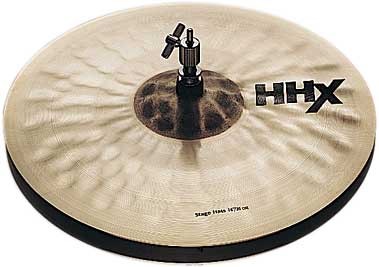 SABIAN 14" HHX Stage Hi-Hats
SABIAN 14" HHX Stage Hi-Hats 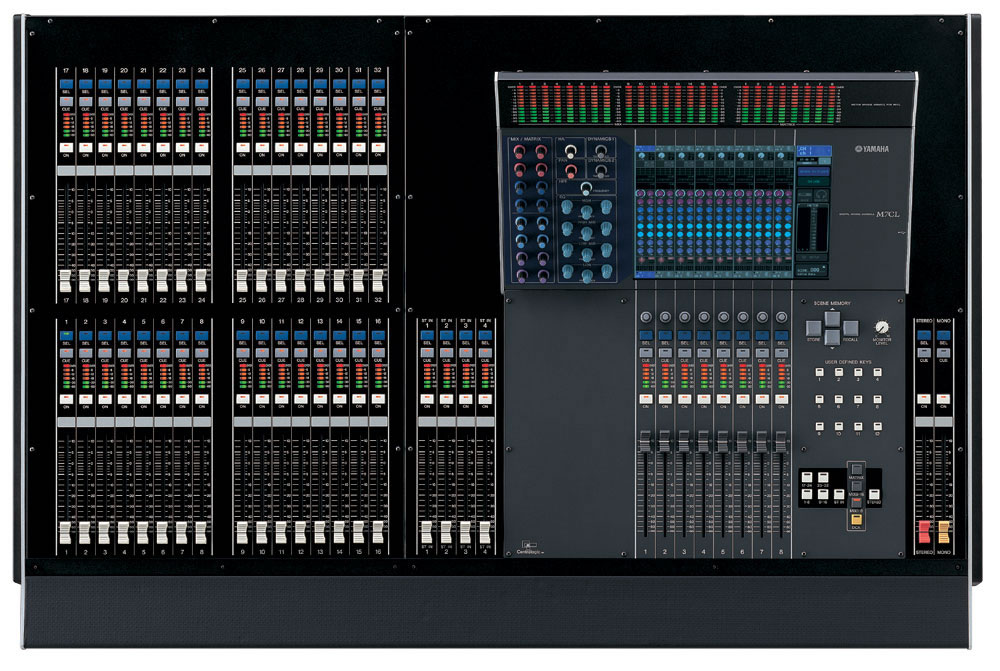
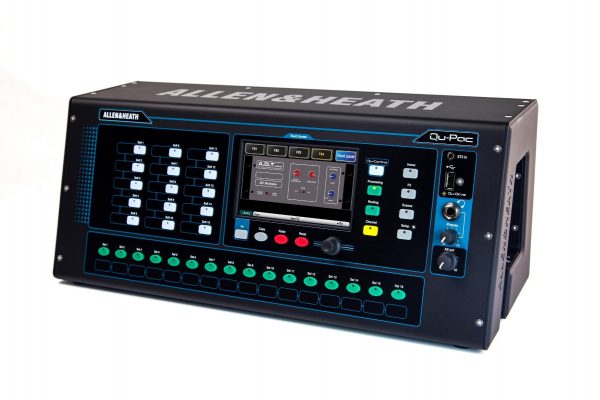
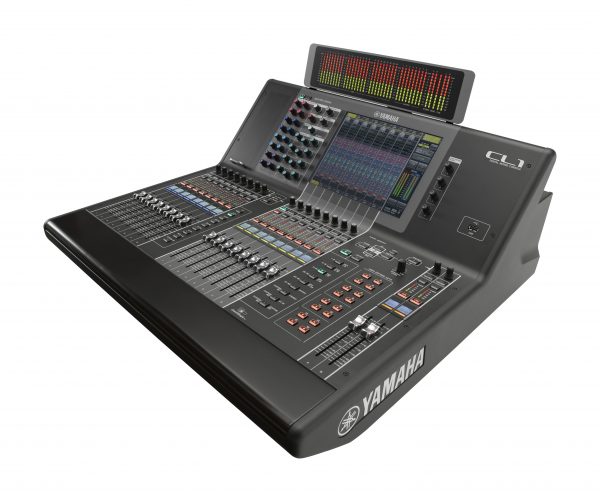
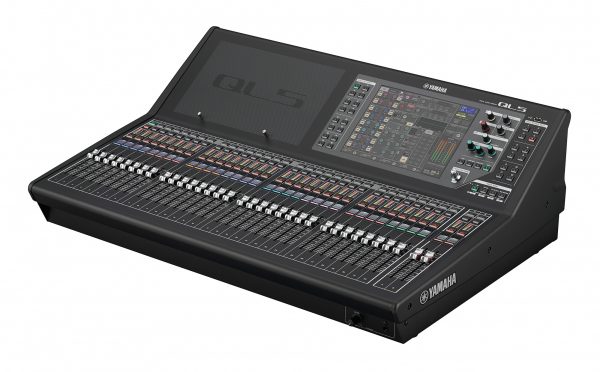
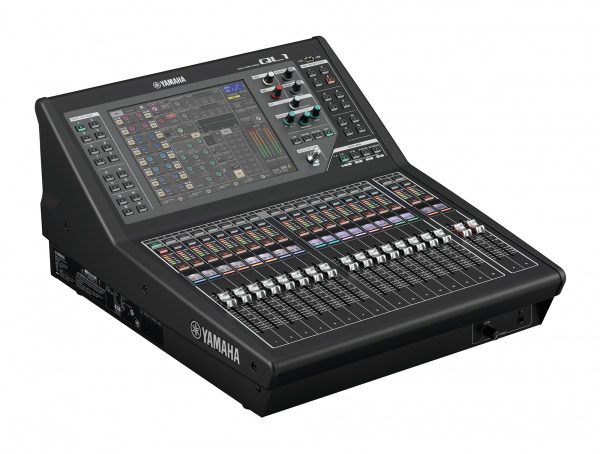
Omtaler
Det er ingen omtaler ennå.